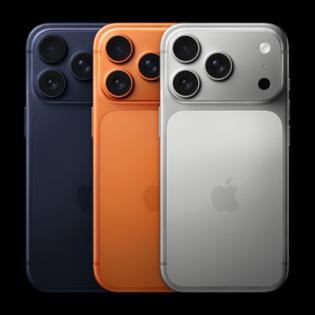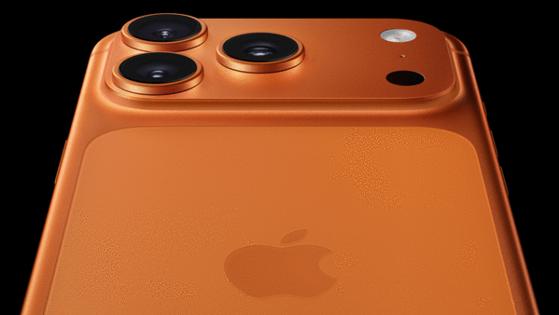Tech review: iPhone 17 Pro Max
Published in Science & Technology News
New iPhone day is one of my favorite days of the year, and this year Apple shook things up a bit.
The last few years of new iPhone day have largely involved Apple releasing two “regular” iPhones (like the 16 and 16 Plus) and two “Pro” phones (16 Pro and 16 Pro Max).
This year Apple introduced three iPhone 17 models — the iPhone 17, 17 Pro and 17 Pro Max — and they introduced the iPhone Air, which is thinner and lighter than any other previous model.
Apple was nice enough to send over the iPhone 17 Pro Max and iPhone Air to review, and for the last few weeks I’ve been using the 17 Pro Max. I’ll switch my number over and review the iPhone Air next month.
I mention the iPhone Air because I think Apple is making a fundamental change in how they position their phones.
Designing phones has always been a delicate dance of making them thin, light and easy to carry, on the one hand, and making them powerful and with a battery that lasts all day.
With the iPhone Air, Apple can go after the “I want a thinner, lighter phone” user, while on the other models they can make changes such as making them thicker to increase the size of the battery.
So what’s new?
The iPhone 17 Pro Max runs on the new A19 Pro CPU inside a unibody made of heat-forged aluminum. The A19 Pro has six CPU cores and six GPU (graphics) cores.
The back of the phone has a feature found in some Android phones called a vapor chamber, which is a small, sealed metal pouch that holds a tiny amount of deionized water. As the phone is used, the internals heat up, causing the water to boil, and then the steam drips the water back over the metal insides of the chamber. The chamber keeps the phone a few degrees cooler, which really helps keep the CPU running more efficiently.
The 6.9-inch Super Retina XDR OLED display has HDR and an adaptive refresh rate up to 120Hz. The screen has a peak brightness of 3,000 nits and can dim down to just one nit.
The dynamic island on the top of the screen houses the facial recognition sensor as well as the new selfie camera. The screen is protected by Ceramic Shield 2, which has three times the scratch resistance of previous glass.
The Pro Max is designed with a larger camera bump that almost spans the width of the phone. Apple calls the enlarged bump the “plateau” and it houses more than just three cameras.
The plateau also houses much of the guts of the CPU, storage and communication (Wi-Fi and cellular radios). The grouping of much of the phone’s internals at the top leaves a lot of room below for the 5,088 milliamp-hour battery, which is the largest battery Apple has ever put in a phone.
Apple says the battery is their best ever and provides up to four more hours of use compared to the battery in the 15 Pro Max. I didn’t specifically run down the battery, but I did regularly charge it up to 100% and used it all day without charging until bedtime.
I never ran the battery down below 30% during my days, which I’d consider pretty heavy use.
When it’s time to recharge, if you use a high-wattage USB port, you can charge from zero to 50% in just 20 minutes. It also has 25-watt MagSafe charging that can provide 50% charge in 30 minutes.
Apple also upped the minimum storage to 256 gigabytes. You can bump that up to two terabytes.
Communication includes Wi-Fi 7, Bluetooth 6 and 5G UWB and satellite connection for emergency SOS, Messages and Find My.
Cameras
All three cameras on the plateau have 48-megapixel sensors that provide views from .5x wide angle up to 8x telephoto. If you know 35mm photography, the lens range is equivalent of 24mm to 200mm.
The quality of the main cameras is impressive. I shot stills and 4K video at a concert and I was very pleased with the results.
The front camera is an 18MP center stage camera, which uses software to keep you centered in the frame during a video conference. It has a square sensor that has a trick up its sleeve — you can hold the camera like you’re taking a vertical selfie but touch a button on the screen to change the image to a horizontal if a friend or two wants to join you in the shot. No more awkwardly holding the phone sideways for a selfie.
Do you need one?
Making a recommendation for people to upgrade is always tricky.
There’s a certain group of people who line up on new iPhone day to buy the newest model.
I’m lucky I get to try them out each year, but the last phone I actually bought is an iPhone 13 Pro Max that still performs perfectly for me.
So, who should be looking at upgrading?
I think iPhone 13 and 14 users should seriously consider it. Apple has moved over to USB-C charging and the processors, screens and cameras have really improved.
Also keep in mind older phones won’t necessarily be compatible with the newest version of iOS. The iPhone 11 models are the oldest that are still iOS 26-compatible, so I expect those will not be supported in iOS 27.
Phones older than the 15 models are also not compatible with Apple Intelligence features.
I’m likely going to retire my 13 Pro Max and choose an iPhone 17 model later this year.
I think the improved cameras, especially the lens range, is a breakthrough feature. I also am a big fan of more battery life.
The iPhone had been stuck in a bit of a design rut — I can’t really tell a 13 from a 16 visually — but the 17 models really stand out with improvements inside and out.
Pricing and availability
The 17 Pro Max is available in silver, cosmic orange and deep blue (no black this year), with a starting price of $1,199 with 256GB of storage. Bumping up to 512GB is $1,399, 1TB is $1,599 and 2TB will set you back $1,999. They are available from Apple stores and Apple.com as well as Amazon, Best Buy and the usual retail outlets, including the major phone carriers.
©2025 Tribune Content Agency, LLC.










Comments